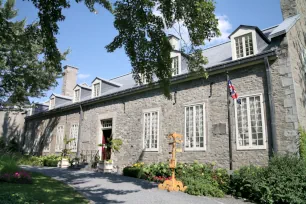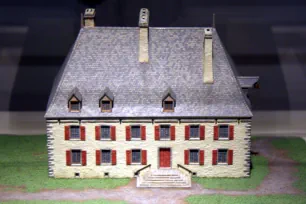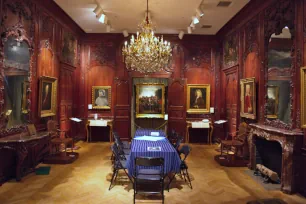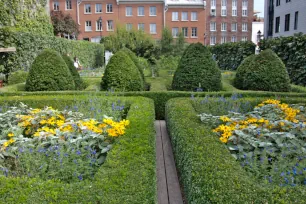The Château Ramezay is one of Montreal’s finest examples of eighteenth-century architecture. The mansion was the first building in the province of Quebec to be classified as a historical monument.
History

When Claude de Ramezay was appointed as the eleventh governor of Montreal in 1704, he wanted a mansion to match his new status. His château, which was completed two years later, was one of the grandest in the city.
The building was designed by stonemason Pierre Couturier and featured one-meter (3 ft.) thick walls, three stories and a saddle roof with dormers. Ramezay boasted it was the most beautiful house in all of New France. But the governor, who paid for the house out of his own pocket, went almost bankrupt trying to maintain it.




Ramezay’s heirs sold it in 1745 to the Compagnie des Indes Occidentales – the French West India Company, which had it significantly expanded around 1756 and used it as their headquarters and warehouse until 1763.
After the British gained control over New France, British governors resided in Ramezay’s château and during the American occupation in 1775 it served as the headquarters of Montgomery’s American army. During this period, Benjamin Franklin stayed here for three months in a vain attempt to convince the Canadians to join the American Revolution.
The château was restored in 1895, when the Antiquarian and Numismatic Society of Montreal established a museum in the building. It was last altered in 1903, when the small towers, which give the building a castle-like look, were added.
The Museum
Today Château Ramezay is home to a museum that tells the history of the château and describes what life was like in eighteenth-century Montreal through a number of historical objects, scale models, paintings, documents, and multimedia displays.
One of the highlights in the museum is the Salle de Nantes, a mahogany paneled room that was created in 1725 as the music room of a director of the West India Company in Nantes, France. The interior paneling was displayed in the French pavilion at the World Expo of 1967. In 1975 the panels were acquired by the Ramezay Museum for its historical connection with the West India Company.
In the vaulted basement, you’ll find recreated rooms, complete with mannequins in traditional dress and period furniture. The rooms give visitors an idea of living conditions in Montreal during the colonial era.
The Garden
The Jardin du Gouverneur or Governor’s Garden behind the château is a recreation of an eighteenth-century garden divided into three parts: a kitchen garden, an orchard and a formal garden. The garden, which was laid out in 2000, is accessible from the adjacent Place Jacques-Cartier.

